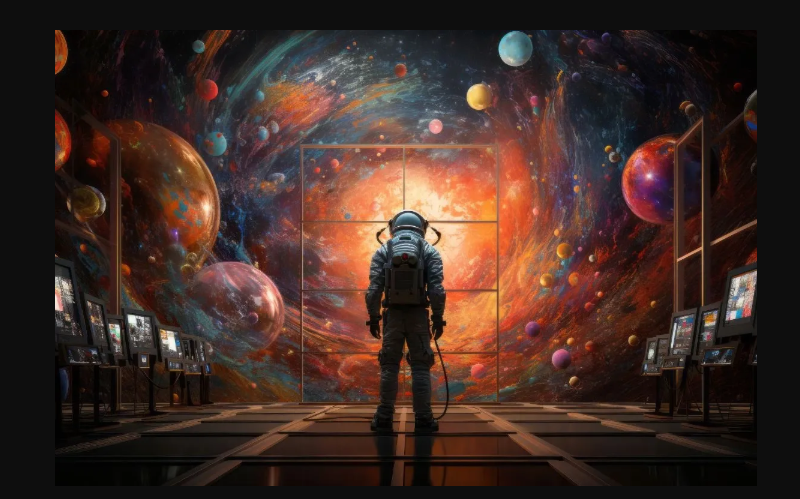What Are the Challenges in Developing AI for Space Exploration? One of the primary hurdles is the harsh and unpredictable environment of space itself. Unlike Earth, space lacks the life-sustaining conditions we take for granted. Extreme temperatures, cosmic radiation, and the vacuum of space pose significant threats to both human and artificial intelligence. Crafting AI that can withstand these rigors without constant human intervention is no small feat.
Another major challenge is communication lag. When we send commands from Earth to rovers or probes exploring distant planets, there’s a delay due to the vast distances involved. This delay can range from minutes to hours, depending on the location of the spacecraft. For AI systems to operate effectively, they must be able to make decisions autonomously without relying on real-time guidance from Earth-based operators.
Furthermore, designing AI for space exploration requires exceptional reliability. The margin for error is minuscule; a single mistake in programming could jeopardize an entire mission. Engineers must anticipate every possible scenario and program AI to react appropriately, even in situations never encountered during testing on Earth.
Moreover, AI must be versatile enough to adapt to different missions and environments. Each celestial body presents unique challenges — from the icy plains of Europa to the swirling storms of Jupiter. AI needs to be flexible, learning from its experiences and adjusting its strategies accordingly to thrive in diverse extraterrestrial settings.

Navigating the Final Frontier: AI’s Role in Overcoming Space Exploration Challenges – What Are the Challenges in Developing AI for Space Exploration?
Imagine a world where spacecraft are not just machines but intelligent companions, capable of making split-second decisions and adapting to the harsh environments of space. This is where AI shines brightest. By integrating AI into spacecraft systems, scientists and engineers can enhance autonomous navigation, predict equipment failures before they occur, and optimize mission trajectories with unparalleled precision.
One of the most daunting challenges of space exploration is the vast distances involved. The sheer enormity of space makes every mission a complex puzzle of orbital mechanics and cosmic hazards. Here, AI acts as our celestial navigator, plotting courses that maximize fuel efficiency and minimize travel time. It’s like having a cosmic GPS that calculates the fastest route through the cosmos.
Moreover, AI empowers robotic explorers to perform tasks that were once unimaginable. From rovers on Mars to probes in the outer reaches of our solar system, AI enables these machines to analyze data in real-time, identify scientifically significant discoveries, and even learn from their surroundings to improve performance over time. It’s akin to having a tireless assistant that tirelessly analyzes vast amounts of data, uncovering hidden insights that would elude even the most dedicated human scientists.
But perhaps AI’s most profound impact on space exploration lies in its ability to mitigate risks. In the unforgiving environment of space, even the smallest mistake can have catastrophic consequences. AI systems are designed to detect anomalies, respond to emergencies, and ensure the safety of both astronauts and equipment. It’s like having an ever-watchful guardian angel, ready to intervene at a moment’s notice.
As we venture further into the cosmos, AI will continue to play an increasingly vital role in our quest for knowledge and discovery. Whether it’s charting new courses through the stars, unlocking the mysteries of distant planets, or safeguarding our explorers, AI stands at the forefront of humanity’s journey into the final frontier.

AI in Space: Tackling Radiation, Communication Lag, and Autonomous Decision-Making
Artificial Intelligence (AI) isn’t just a buzzword on Earth; it’s revolutionizing our conquest of space too. Imagine a future where spacecraft navigate the vastness of the cosmos autonomously, overcoming challenges that once seemed insurmountable. AI is at the heart of this transformation, addressing key issues like radiation exposure, communication delays, and decision-making in the void of space.
Radiation poses one of the most significant threats to astronauts and spacecraft alike. Beyond Earth’s protective atmosphere, cosmic rays and solar radiation can wreak havoc on electronic systems and human health. AI plays a crucial role here by predicting radiation events, allowing spacecraft to autonomously take evasive actions or activate shielding to protect sensitive equipment and crew.
Communication in space is another formidable challenge. The vast distances introduce significant lag times in data transmission, making real-time control from Earth impractical for deep-space missions. AI steps in as a real-time decision-maker onboard. By analyzing data locally and making informed choices independently, AI reduces reliance on continuous communication with Earth, enabling more efficient operation of spacecraft even when communication is intermittent or delayed.
Furthermore, the autonomy conferred by AI extends beyond mere survival to enhanced exploration capabilities. Imagine an AI-driven spacecraft navigating through asteroid fields or autonomously docking with space stations. These tasks require split-second decisions based on complex sensor data, something AI excels at. Like a skilled pilot, AI can maneuver through the complexities of space, adapting to unforeseen challenges without constant human intervention.

Beyond Earth’s Bounds: How AI is Revolutionizing Space Mission Planning
Imagine navigating through the vast expanse of space, plotting routes across galaxies and planning missions to distant planets. This futuristic vision is rapidly becoming reality, thanks to the transformative power of Artificial Intelligence (AI) in space mission planning. From analyzing complex data to optimizing spacecraft trajectories, AI is reshaping the way we explore beyond Earth.
One of the most striking aspects of AI in space mission planning is its ability to process enormous amounts of data with incredible speed and accuracy. Traditionally, planning missions beyond Earth involved meticulous calculations and simulations that could take months or even years. AI algorithms, however, can sift through massive datasets in seconds, identifying patterns and generating insights that human planners might overlook.
Think of AI as the mission’s co-pilot, constantly crunching numbers and evaluating scenarios to find the most efficient routes and mission parameters. It’s like having a supercharged navigation system that not only calculates the shortest path but also considers factors like gravitational pulls, celestial mechanics, and even unexpected space debris.
Moreover, AI brings adaptability to space missions. Space is unpredictable, with variables like solar flares or gravitational anomalies posing potential risks. AI-powered systems can adjust mission plans in real-time, responding to new data and changing conditions swiftly. This agility is crucial for ensuring the safety of astronauts and the success of missions that venture deeper into space than ever before.
In essence, AI is not just a tool but a transformative force in space exploration. It enables us to dream bigger, plan smarter, and push the boundaries of what’s possible. As AI continues to evolve, so too will our capabilities to explore and understand the cosmos.
In the realm of space mission planning, AI is truly a game-changer, ushering in a new era of exploration where the boundaries of what we can achieve are defined by our imagination rather than technological limitations. As we look to the future, one thing is certain: AI will be at the forefront of our journey beyond Earth’s bounds.

The Cosmic Conundrum: AI’s Battle Against Extreme Environments
Imagine AI as an intrepid explorer, venturing into the fiery heart of a star or the icy desolation of a distant moon. Its mission: to gather data, unravel mysteries, and push the boundaries of human knowledge. But the challenges it faces are daunting.
In the scorching heat of a star’s core, where temperatures soar to millions of degrees Celsius, traditional electronics would melt in an instant. Yet AI perseveres, utilizing advanced materials and cooling systems inspired by nature itself. Like a resilient astronaut clad in a futuristic suit, AI adapts to thrive where others cannot.
On the flip side, in the frozen realms of outer space, where temperatures plummet to near absolute zero, AI must confront a different set of challenges. Conventional batteries freeze solid, rendering them useless. But AI engineers, undeterred by such obstacles, develop energy solutions that harness the power of cosmic radiation or the kinetic energy of planetary motion.
The cosmic conundrum extends beyond temperature extremes. In the crushing pressures of gas giants or the vacuum of interstellar space, AI must operate flawlessly under conditions that defy imagination. Its sensors become the eyes and ears of humanity, transmitting data across light-years with precision and clarity.
As AI blazes a trail through these cosmic frontiers, it not only expands our understanding of the universe but also redefines the limits of technology itself. Each challenge met is a triumph of human ingenuity, a testament to our relentless pursuit of knowledge and discovery. And as AI continues its journey, the cosmic conundrum evolves, presenting new puzzles to solve and new horizons to explore.


